How does dieting, cardio, lifting, and PROTEIN interact in figure recomposition?
Readers may be detecting the (obvious) running theme of the journal club right now.
Yes.
It is New Year’s time and this is when all the resolutions and crowded gyms happen. What better time to review studies on exercise, weight loss, and recomposition?!
Today, we join one of the preeminent researchers of protein to take a look at the same topic as last time, but with the twist of protein’s involvement. This group is headed by Dr. Layman and this 2005 paper is titled, Dietary protein and exercise have additive effects on body composition during weight loss in adult women.
Methods
This study lasted 4 transformation-sensation months and had all female participants. There were 4 groups. The first ate a “normal” diet and walked for 30 minutes a day for 5 days a week. The second group had a higher protein diet (↑PRO) and did the same walking routine. The third group had a “normal” diet, did the same walking routine, and also did 2 days of resistance training a week. The fourth group had a ↑PRO diet, did the same walking routine, and did the resistance training.
The resistance training involved 7 machine exercises that encompassed all of the major muscle groups. The lifters did a minimum of 1 set of 12 repetitions with each exercise. With 1 minute rest periods, the resistance exercise sessions lasted a minimum of 30 minutes.
The diets were structured via meal plans that the researchers counseled weekly and provided information on. The plans were calorically (kcals) matched, such that the “normal” diet ended up having more carbs in it due to less protein and the ↑PRO diet had less carbs in it due to the higher protein amount. The kcals/day for the plans was 1700. The lower protein group had a target of 0.8 g/kg/d and the ↑PRO group had a target of 1.6 g/kg/d.
Below are the starting descriptive stats of each group. As always, they’re group averages and rounded to the nearest whole number for the ease of viewing.
All of the participants were sedentary, overweight, and had physicals to ensure that they were healthy and able to complete the study. Each had a food diary. They had pre/post measurements taken of their scale weight, DEXA scans, and blood work.
Results
As always, let us cut to the chase. The “normal” eats/walking group lost 17 lbs. The ↑PRO/walking group lost 19 lbs. The “normal” eats/walking/lifting group lost 15 lbs. The ↑PRO/walking/lifting group lost 21 lbs.
Let’s dissect those losses!
Put another way:
The target of the diet was 1700 kcals/day. Below are the reported baseline kcals and the diet kcals for each group.
Put another way:
When it came to the difference in protein between the groups:
When the researchers examined the blood test results, they found what is a common result in weight loss studies. The lipid and endocrine profiles for all of the participants improved.
Implications / Thoughts
Because of the study design, the researchers were able to look at the independent and additive effects of diet and exercise while the participants lost weight. Eating more protein had a beneficial effect whether the participants lifted or not. Those participants got leaner, losing more weight as fat and less as LBM. The same can be said about lifting. The participants that lifted lost more of the weight as fat and less as LBM.
The common result for the blood work is that weight loss, regardless of whether participants do it via low/high protein or walking/lifting, results in improvements. Every study finds improved lipid profiles. This study also found improved endocrine markers. The insulin levels improved and so did the satiety hormones.
Why the different composition results from the previous study? We can say that the “normal” diet groups in today’s study are similar to the previous study’s groups. But the previous study’s participants lost practically all of the ~15 lbs as FM. Why didn’t that happen in this study? First, the previous study’s researchers admit that they didn’t know why the control group did not lose any LBM. Second, I think that the use of structured moderate/high intensity cardio training in the previous study had beneficial effects. Other studies have shown that moderate/high intensity cardio training improves body composition. The cardio used in today’s study can be described as low intensity. Consequently, I think the participants in today’s study did not have the LBM preservation that the prior study’s subjects had.
In Conclusion
Once again, hard consistent work has been demonstrated as the overall route to weight loss. In particular, though, our individual goals may mean that we should consider different avenues toward weight loss. If just simply losing scale weight is the goal, then use whatever means here you like. If leaning out in a way that maximizes LBM preservation is your goal, then increasing protein consumption (to the tune of an extra ~50g or more per day), increasing the intensity of your cardio, and/or doing resistance training while dieting may be the best avenues to your goal.
If you have any questions about this study or anything I said, please feel free to leave a comment. I will get back to you and others may have insight to offer, too. If you have any questions or topic suggestions that you would like answered as a post, then please email me at robert@analyticfitness.com.
Don’t forget to like Analytic Fitness on Facebook, or follow me on Twitter or the other social medias!

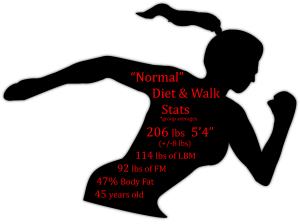
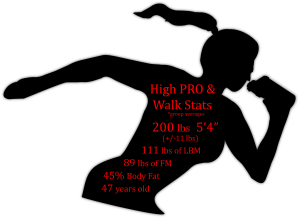
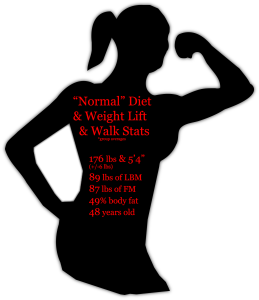
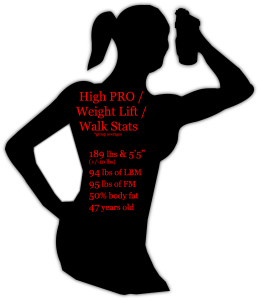
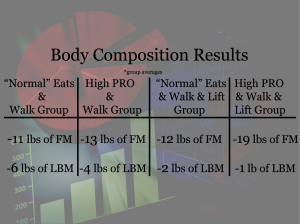
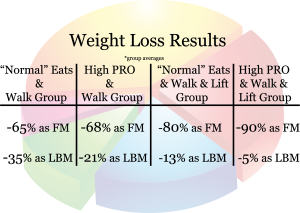
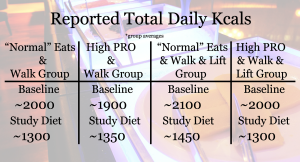
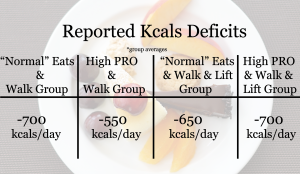
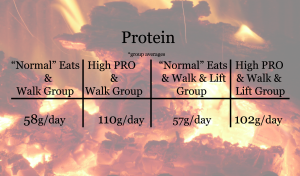




No Responses